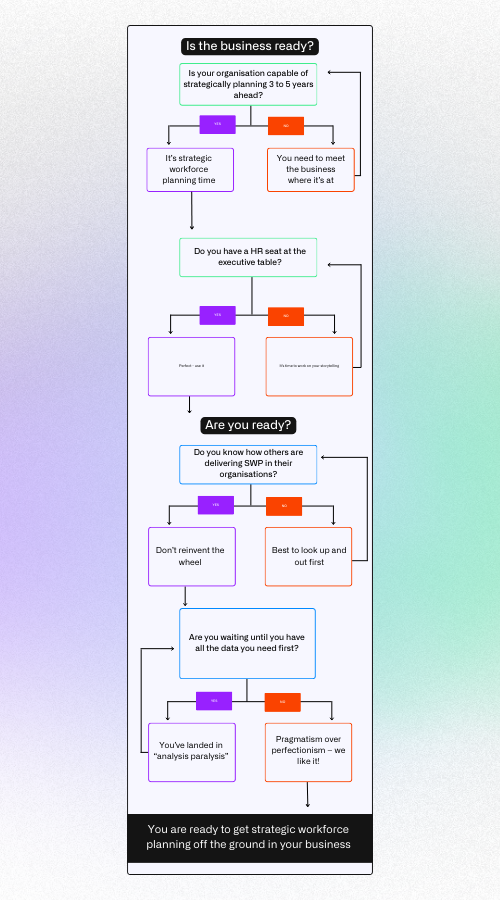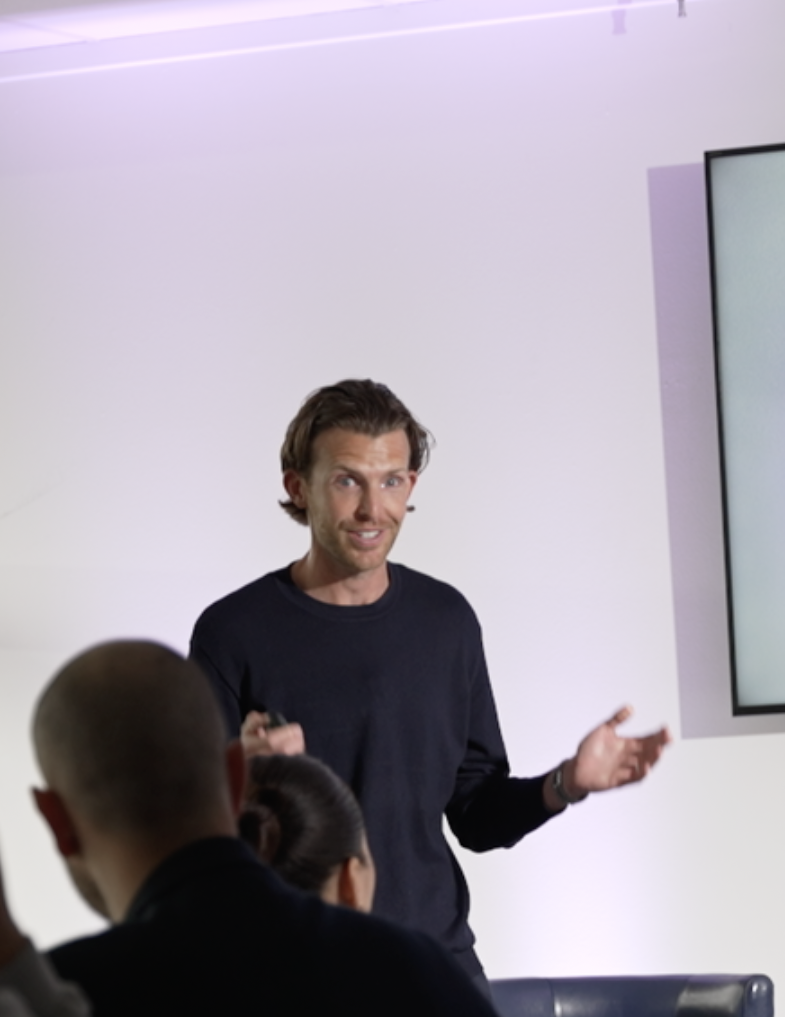Strategic workforce planning guide
- Share on LinkedIn
- Share on Twitter
- Copy link Copied to clipboard

Strategic workforce planning guide

How to know when you are ready
In preparation for our strategic workforce planning event held at the iconic BBC, @Ben Rutter spent weeks networking with the crème de la crème of SWP experts in the UK.
- Most businesses have mastered short-term workforce planning, but few have tackled its strategic big sister.
- With AI and automation advancing rapidly, companies are scrambling to find the right human-AI balance.
- Those who nail SWP will thrive in the next 5 years; those who don’t may struggle.
On his SWP journey, he spoke to Peter Trussell. Pete, Head of Strategic Workforce Planning & Talent at the UK Space Agency, shares his top tips for getting off your SWP blank page and figuring out if you’re ready for it. They plan over 5-10 year time horizons!
Check out the infographic or read on to learn more.

Pete Trussell
Head of Strategic Workforce Planning & Talent @ UK Space Agency
How to get strategic workforce planning off the ground in your business
To achieve this you must first answer some key questions about your business and about yourself.
Is the business ready?
Q1. Is your organisation capable of strategically planning 3 to 5 years ahead?
Yes – its strategic workforce planning time. The demand signal for SWP comes from your organisation’s strategic plans. What’s the plan for the future? Where will the business grow or change? What do your customers need? The answer to these questions comes down to the right people, with the right skills, in the right job, at the right time, which SWP helps to identify.
No – you need to meet the business where it’s at. The difference between strategic and operational workforce planning is the time-horizon. If your business can’t see past the end of the financial year, then workforce planning can’t either. Short-term activities can still be incredibly valuable to your business, but if the organisation wants strategic then it needs to get its own crystal ball out first before expecting you to do the same.
Q2. Have you got a HR seat round the executive table?
Yes – perfect; use it. Having HR representation in “the room where it happens” gives the function the spotlight it needs. Work closely with your HR executive to make sure the business knows what you’re doing around SWP, why it matters, and the positive impact it will have on the bottom line.
No – it’s time to work on your storytelling. HR often falls short of communicating the business benefits of its work. Consider developing user journeys or case studies (using data from exit interviews, pulse surveys, staff attrition rates) to show what happens when your business gets workforce planning wrong, and how you’re going to fix it. This will help you make allies in the boardroom to communicate that your work matters.
Are you ready?
Q1. Do you know how others are delivering SWP in their organisations?
Yes – don’t reinvent the wheel. Leverage your networks to gain insights into what works, what doesn’t, and the bear traps you’ll want to avoid. Don’t forget, though, your business needs are unique, so be sure to adapt whatever you borrow.
No – time to look up and out. If you’re not sure where to start in finding out how others are delivering SWP, the CIPD has a useful six-stage model to workforce planning. Spoiler alert, it’s not on the cutting-edge of innovative HR but they are tried and tested approaches to get SWP off the ground and are easily tailored to the needs of your business.
2. Are you waiting until you have all the data you need first?
Yes – You’ve landed in “analysis paralysis”. Employee data is central to effective SWP, but waiting too long and overanalysing everything means you’ll never get started. Take what you have, improve what you don’t, and keep making progress.
No – pragmatism over perfectionism, we like it! SWP isn’t an exact science, it’s a risk management activity. You need “good enough” data, that’s acceptably reliable, regularly maintained, and tells you what you actually need to know: what’s the make-up of our workforce? What skills do we have? What do we need? Which roles are critical for our business?
Summary
If your business has a clear future strategy and your team has a seat at the executive table then the business is ready for SWP.
If you know how others are doing this and have some reliable data you can work from then you are ready.
Gain further inspiration
Co-created content from the HOV community.
This free smoke consists of inspiring podcasts, insights and tools to help you level up the game in TA and HR.

